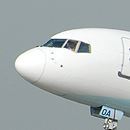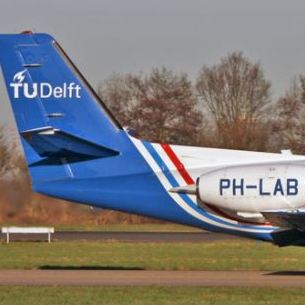Moderators: richierich, ua900, PanAm_DC10, hOMSaR
-

- PacoMartin
- Posts: 901
- Joined:
Airports too Small for Big Jets
Southwest Airlines, as we all know, has only been receiving new 175 seat jets since 2012. But the bulk of their fleet is 143 seat jets delivered new before 2012 or acquired used since then. Hawaii routes naturally use only the larger jets, while at least two airports with fewer than 1000 Southwest passengers per day are served with only the smaller jets. Other airports use a combination appropriate to the business of the route. This distribution is too be expected.
Based on enplaned passengers(000) both arriving and departing.
Portland, ME: Portland International Jetport (PWM)(12 months ending Dec 2018) 304,000
Southwest 304 14.34%
American 237 11.21%
Endeavor 228 10.75%
Delta 198 9.34%
JetBlue 179 8.44%
Other 973 45.92%
Pensacola International Airport Total Passengers Served (12 months ending Dec 2018) 289,000
Carrier Passengers Share
Delta 702 36.13%
Southwest 289 14.89%
Envoy Air 204 10.52%
American 194 10.00%
PSA 129 6.65%
Other 424 21.81%
My question is hypothetical. Over the next 15-20 years Southwest will probably phase out the smaller jets as they all get fairly old. Will
(1) Southwest buy a new class of smaller jets like B737-7 MAX, or A220-300s
(2) Force these small airports into more limited routes with larger jets
(3) Abandon some tiny airports or all routes suitable to smaller jets as incosistent with their business plan
Based on enplaned passengers(000) both arriving and departing.
Portland, ME: Portland International Jetport (PWM)(12 months ending Dec 2018) 304,000
Southwest 304 14.34%
American 237 11.21%
Endeavor 228 10.75%
Delta 198 9.34%
JetBlue 179 8.44%
Other 973 45.92%
Pensacola International Airport Total Passengers Served (12 months ending Dec 2018) 289,000
Carrier Passengers Share
Delta 702 36.13%
Southwest 289 14.89%
Envoy Air 204 10.52%
American 194 10.00%
PSA 129 6.65%
Other 424 21.81%
My question is hypothetical. Over the next 15-20 years Southwest will probably phase out the smaller jets as they all get fairly old. Will
(1) Southwest buy a new class of smaller jets like B737-7 MAX, or A220-300s
(2) Force these small airports into more limited routes with larger jets
(3) Abandon some tiny airports or all routes suitable to smaller jets as incosistent with their business plan
-

- PatrickZ80
- Posts: 5801
- Joined:
Re: Airports too Small for Big Jets
The difference between a 737-700 and 800 is negligible, it's only a few seats. Any airport that can handle a 700 can also handle and 800, there's no difference.
So I'm guessing it's option 2, however the route limitation will hardly be notable. They'll just sell more seats. The benefit of a larger aircraft is that the operational costs per seat are lower, so they can sell those seats cheaper in order to stimulate demand. Meanwhile they'd still keep more or less the same revenue.
Maybe on some routes they'd cut the frequency a little if they got the feeling they can't stimulate the market enough by lower fares.
So I'm guessing it's option 2, however the route limitation will hardly be notable. They'll just sell more seats. The benefit of a larger aircraft is that the operational costs per seat are lower, so they can sell those seats cheaper in order to stimulate demand. Meanwhile they'd still keep more or less the same revenue.
Maybe on some routes they'd cut the frequency a little if they got the feeling they can't stimulate the market enough by lower fares.
-

- Elementalism
- Posts: 736
- Joined:
Re: Airports too Small for Big Jets
Southwest takes the -800 into Midway. These airports can take an -800 or -8 MAX.
I would expect no change from Southwest.
I would expect no change from Southwest.
-

- aemoreira1981
- Posts: 4264
- Joined:
Re: Airports too Small for Big Jets
One must also consider the impact of Breeze here, especially in the Midwest and Plains. They will start with the Embraer 195 based on the Southwest model (founded by a co-founder of Morris Air, and so he would know about that area), and then transition to the A220-300. Keep in mind that A220-300 is nearly 13 tons lighter than the MAX 7, and 3 tons lighter than the 73G. Breeze could eat into WN's market in that region, and then later expand on the model that has made WN profitable, but with lighter planes.
Also, there are some airports than can handle the 73G, but not the 73H...like SNA, with only a 5700-foot runway; MDW's longest runway is 6500 feet, able to handle the 73H. (I have been speculating whether or not SNA could handle the upcoming hot-and-high variant of the A21N in the B6 thread.)
(Tons - metric tons.)
Also, there are some airports than can handle the 73G, but not the 73H...like SNA, with only a 5700-foot runway; MDW's longest runway is 6500 feet, able to handle the 73H. (I have been speculating whether or not SNA could handle the upcoming hot-and-high variant of the A21N in the B6 thread.)
(Tons - metric tons.)
Re: Airports too Small for Big Jets
PacoMartin wrote:My question is hypothetical. Over the next 15-20 years Southwest will probably phase out the smaller jets as they all get fairly old. Will
(1) Southwest buy a new class of smaller jets like B737-7 MAX, or A220-300s
(2) Force these small airports into more limited routes with larger jets
(3) Abandon some tiny airports or all routes suitable to smaller jets as incosistent with their business plan
They already have bought the MAX 7, with some scheduled to arrive this year (subject to change)
Re: Airports too Small for Big Jets
PatrickZ80 wrote:The difference between a 737-700 and 800 is negligible, it's only a few seats. Any airport that can handle a 700 can also handle and 800, there's no difference.
So I'm guessing it's option 2, however the route limitation will hardly be notable. They'll just sell more seats. The benefit of a larger aircraft is that the operational costs per seat are lower, so they can sell those seats cheaper in order to stimulate demand. Meanwhile they'd still keep more or less the same revenue.
Maybe on some routes they'd cut the frequency a little if they got the feeling they can't stimulate the market enough by lower fares.
While true, for example RTM used to base more -700's because the limited runway made the canary islands unreachable I believe with full pax. Now they fly with the -800's and seats blocked I belive.
Re: Airports too Small for Big Jets
PacoMartin wrote:(1) Southwest buy a new class of smaller jets like B737-7 MAX, or A220-300s
Given that WN has at least 50 737-700s that are less than 12 years old there is no urgency. -700s make up nearly 2/3 of WN's frames by count. Lack of -700s or MAX 7s isn't going to cause WN to drop PWM service.
People have tried lots of ways to rationalize that WN needs a new type. Some day they'll get one. If they were interested in serving smaller markets they could have kept the 717s instead of paying $160 million to refurb/reconfigure them for Delta.
The more interesting question is what routes/airports will be dropped as CR2/E145/CR7s age out?
-

- aemoreira1981
- Posts: 4264
- Joined:
Re: Airports too Small for Big Jets
MIflyer12 wrote:PacoMartin wrote:(1) Southwest buy a new class of smaller jets like B737-7 MAX, or A220-300s
Given that WN has at least 50 737-700s that are less than 12 years old there is no urgency. -700s make up nearly 2/3 of WN's frames by count. Lack of -700s or MAX 7s isn't going to cause WN to drop PWM service.
People have tried lots of ways to rationalize that WN needs a new type. Some day they'll get one. If they were interested in serving smaller markets they could have kept the 717s instead of paying $160 million to refurb/reconfigure them for Delta.
The more interesting question is what routes/airports will be dropped as CR2/E145/CR7s age out?
Also, if LGA can handle the 73H, so can PWM (PWM's runway is 200 feet longer). Now, as far as the CRJ2/E145 is concerned, I suspect that markets unable to handle at least a CRJ9 or E175 daily will be dropped, as the trend is toward up-gauging in aviation today. An airport that could be in danger of losing service again, that is in the Greater NY area, is HVN (that plane sees up to an E175 from CLT).
-

- PacoMartin
- Posts: 901
- Joined:
Re: Airports too Small for Big Jets
PatrickZ80 wrote:The difference between a 737-700 and 800 is negligible, it's only a few seats. Any airport that can handle a 700 can also handle and 800, there's no difference.
Portland's jetport has a 7200' runway which is longer than any airport at Chicago's Midway airport. Maine's population is 1.34 million with only 300,000 in the county in which the airport is located. Portland averaged less than 6000 daily passengers boarding and taking off last year on all airlines. Southwest began operations on April 14, 2013 and flies to Baltimore year round and seasonal: Chicago–Midway, Orlando, and Nashville (begins June 13, 2020). So it seems obvious that the limited population and demand and not the physical limitations of the airport is the reason Southwest only flies the smaller -700 jet.
PatrickZ80 wrote:So I'm guessing it's option 2, however the route limitation will hardly be notable. They'll just sell more seats. The benefit of a larger aircraft is that the operational costs per seat are lower, so they can sell those seats cheaper in order to stimulate demand. Meanwhile they'd still keep more or less the same revenue.
Now obviously 143 seats x 5 = 715 seats for B737-700 and 175 seats x 4 = 700 seats for the B737-800. Southwest became the nation's largest domestic air carrier in 2003 (by total passengers). They began accepting delivery of the -700 in the year 1997, but it wasn't until 8. Mar. 2012 that Southwest took delivery of its first -800 jet.
The implication of your statement is that Southwest will probably not reduce their network size in any meaningful way, but simply try and upgauge the jets used throughout.
In any case this process will be long term, as the last -700 delivery was on 21. Dec. 2011, so that jet is only 8 years old. Plus Southwest had 30 MAX-7 jets on order, so some fraction of the over 500 B737-700 jets will be replaced with the same size new jet.
Re: Airports too Small for Big Jets
Population and passenger counts tend to grow over time. Some of those airports should grow their traffic to fill the larger aircraft.
-

- PacoMartin
- Posts: 901
- Joined:
Re: Airports too Small for Big Jets
mjgbtv wrote:Population and passenger counts tend to grow over time. Some of those airports should grow their traffic to fill the larger aircraft.
That is a resonable guess and was option #3. Up until 1967 you needed to fly in a 4 engine jet to have more than 131 seats and the biggest Boeing 4 engine jet was limited to 189 seats. As air travel grows, the popularity grows for larger jets.
So if Southwest has over 500 jets with 143 seats, and average age is 15.6 years, over the next 15 years it is possible that even the smallest Southwest airport can be served economically with 175 seat aircraft.
503 Boeing 737-700: 15.6 Years average Southwest
But what about United's fleet of "smaller" jets (362 jets). They are considerably older than Southwest
82 Airbus A319-100: 18.2 Years (youngest of which is 12 years old)
99 Airbus A320-200: 21.5 Years (only two are less than 17 years old)
41 Boeing 737-700: 20.8 Years (youngest is 15.7 years old)
141 Boeing 737-800: 16.0 Years (eleven out of 141 of these jets are less than 9 years old)
Southwest had not bought a smaller jet in 8 years, and United has only bought 11 in the last 9 years old, but United's fleet is much older. Do you have the same optimisism that United can simply upgauge to larger jets (B737-900 and MAX-9)?
American's fleet is much younger, and Delta has been buying the smaller A220-100 in an effort to reduce the age of their "small" fleet.
Re: Airports too Small for Big Jets
Your title is odd and confusing. Seems like you're talking about airport physicality, rather than market demand.
Re: Airports too Small for Big Jets
PacoMartin wrote:mjgbtv wrote:Population and passenger counts tend to grow over time. Some of those airports should grow their traffic to fill the larger aircraft.
That is a resonable guess and was option #3. Up until 1967 you needed to fly in a 4 engine jet to have more than 131 seats and the biggest Boeing 4 engine jet was limited to 189 seats. As air travel grows, the popularity grows for larger jets.
So if Southwest has over 500 jets with 143 seats, and average age is 15.6 years, over the next 15 years it is possible that even the smallest Southwest airport can be served economically with 175 seat aircraft.
503 Boeing 737-700: 15.6 Years average Southwest
But what about United's fleet of "smaller" jets (362 jets). They are considerably older than Southwest
82 Airbus A319-100: 18.2 Years (youngest of which is 12 years old)
99 Airbus A320-200: 21.5 Years (only two are less than 17 years old)
41 Boeing 737-700: 20.8 Years (youngest is 15.7 years old)
141 Boeing 737-800: 16.0 Years (eleven out of 141 of these jets are less than 9 years old)
Southwest had not bought a smaller jet in 8 years, and United has only bought 11 in the last 9 years old, but United's fleet is much older. Do you have the same optimisism that United can simply upgauge to larger jets (B737-900 and MAX-9)?
American's fleet is much younger, and Delta has been buying the smaller A220-100 in an effort to reduce the age of their "small" fleet.
United has an extra option which is to switch routes back to regional flying.
-

- PacoMartin
- Posts: 901
- Joined:
Re: Airports too Small for Big Jets
LAX772LR wrote:Your title is odd and confusing. Seems like you're talking about airport physicality, rather than market demand.
Sorry. I can't change it although I don't care if a moderator changes the title.
mjgbtv wrote:United has an extra option which is to switch routes back to regional flying.
They have no doubt done that up to the limits of their pilot contract.
It has always seemed to me that United serves a fairly large number of markets given it's relatively small and aged fleet of jets with limited number of seats.
BTS Summary Data (U.S. Airports, 12 Months Ending October) Markets Served
162 Delta
151 United
120 American
91 Southwest
Delta serves more markets than United, but their fleet of smaller jets (374 jets) is at least showing some limited fleet renewal in the A220s
29 Airbus A220-100 0.7 Years
57 Airbus A319 18.0 Years
62 Airbus A320 24.5 Years
91 Boeing 717 18.4 Years
10 Boeing 737-700 11.1 Years
77 Boeing 737-800 18.5 Years
48 McDonnell Douglas MD-80 28.7 Years
Repeating United's fleet of "smaller" jets (362 jets).
82 Airbus A319-100: 18.2 Years (youngest of which is 12 years old)
99 Airbus A320-200: 21.5 Years (only two are less than 17 years old)
41 Boeing 737-700: 20.8 Years (youngest is 15.7 years old)
141 Boeing 737-800: 16.0 Years (eleven out of 141 of these jets are less than 9 years old)
Re: Airports too Small for Big Jets
LAX772LR wrote:Your title is odd and confusing. Seems like you're talking about airport physicality, rather than market demand.
Yes, exactly. At first I thought the post was about airport marketing areas that can consistantly supply good loads for MD-80, 73G A319- 20s size aircraft that may just under the bar when many of them go away and the next larger tier of aircraft comprise the fleet majority. 738s A321s etc. may be a bit much to fill profitably for these cities. This is different than the airport itself where there is a measureable but not dramatic feild performance difference between a 737 and a 738 as an example. 7200' is adequate but certainly not ample in a climate like Portland ME
Who is online
Users browsing this forum: AKL321NX, Anansaudiajet, ausinTex, BangersAndMash, Bing [Bot], Chris2302, deltacto, dkny, doug, DrewBe, flyoregon, intrance, jrfspa320, LH982, macfriss, ostrich9128, redroo, reply1984, Toinou, yoeleven, YSSYplanespoter and 217 guests

